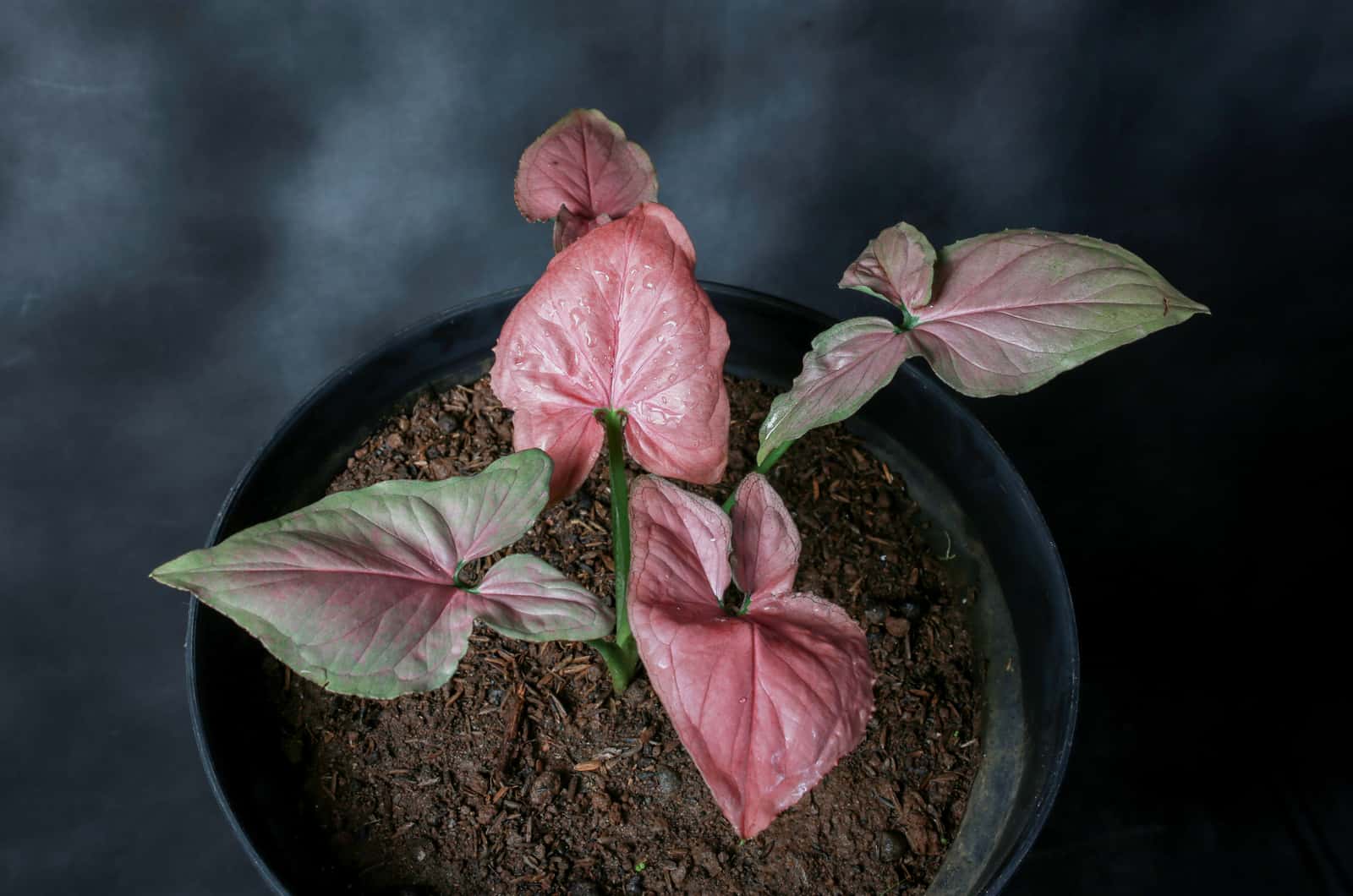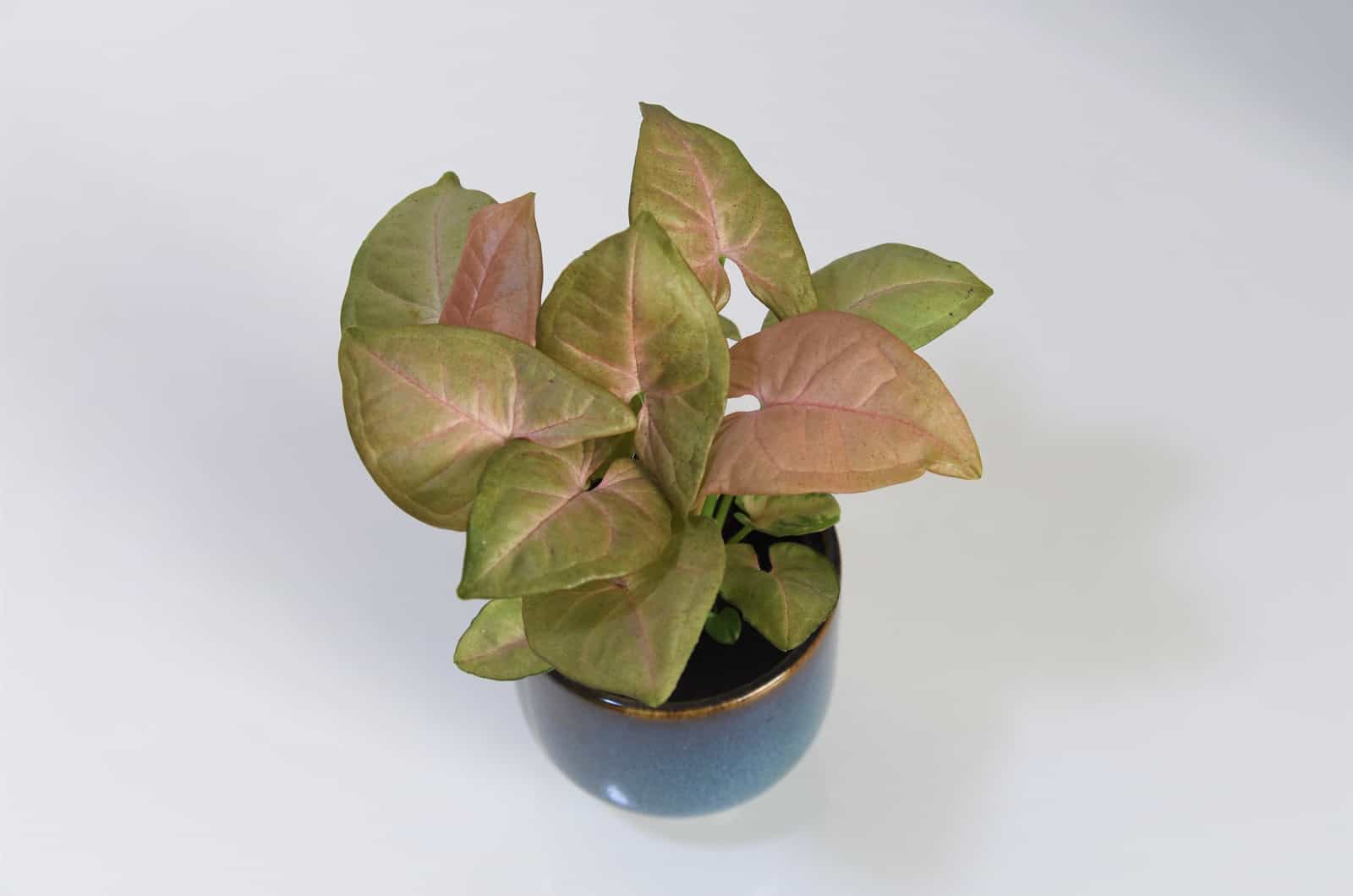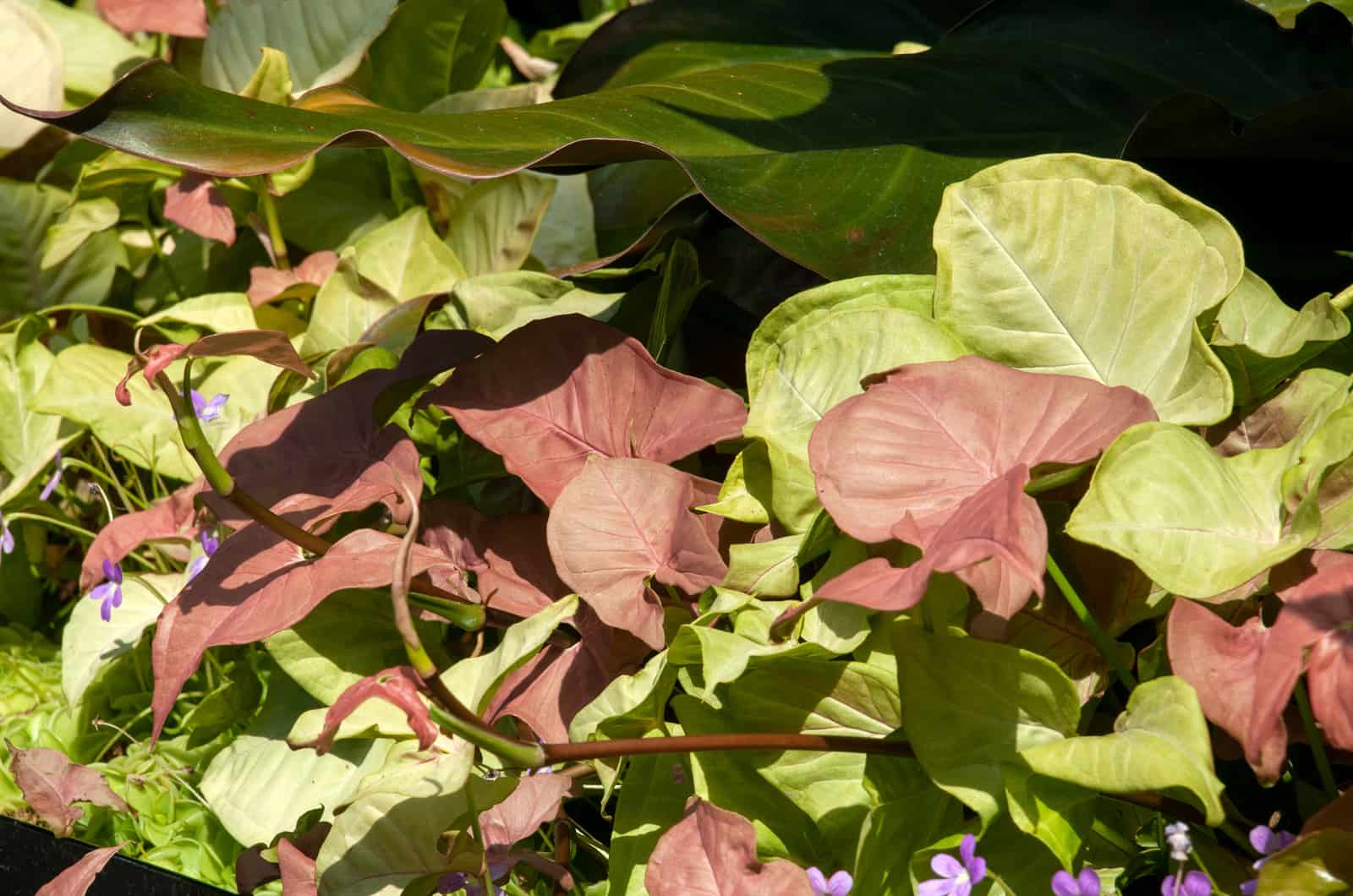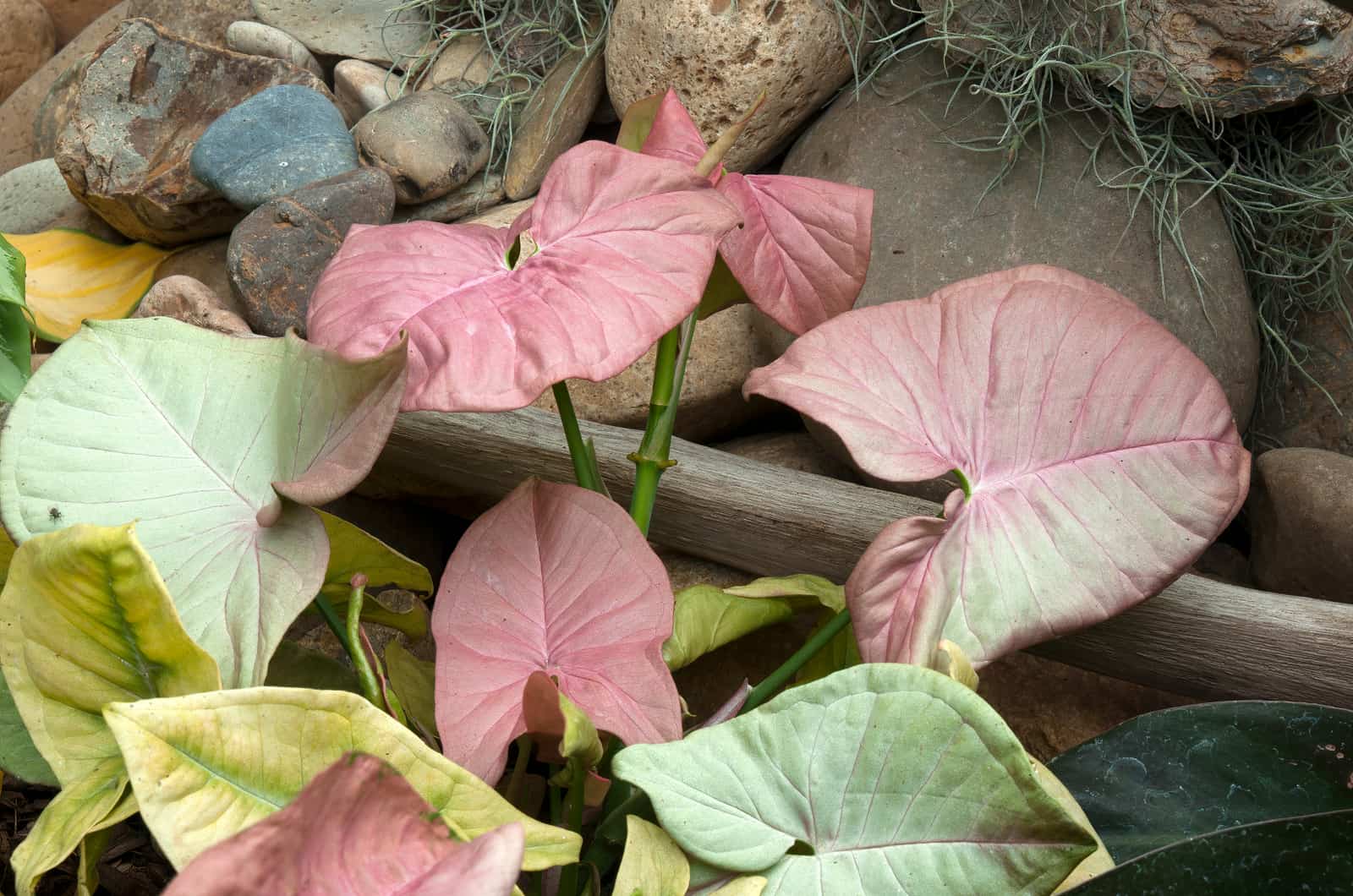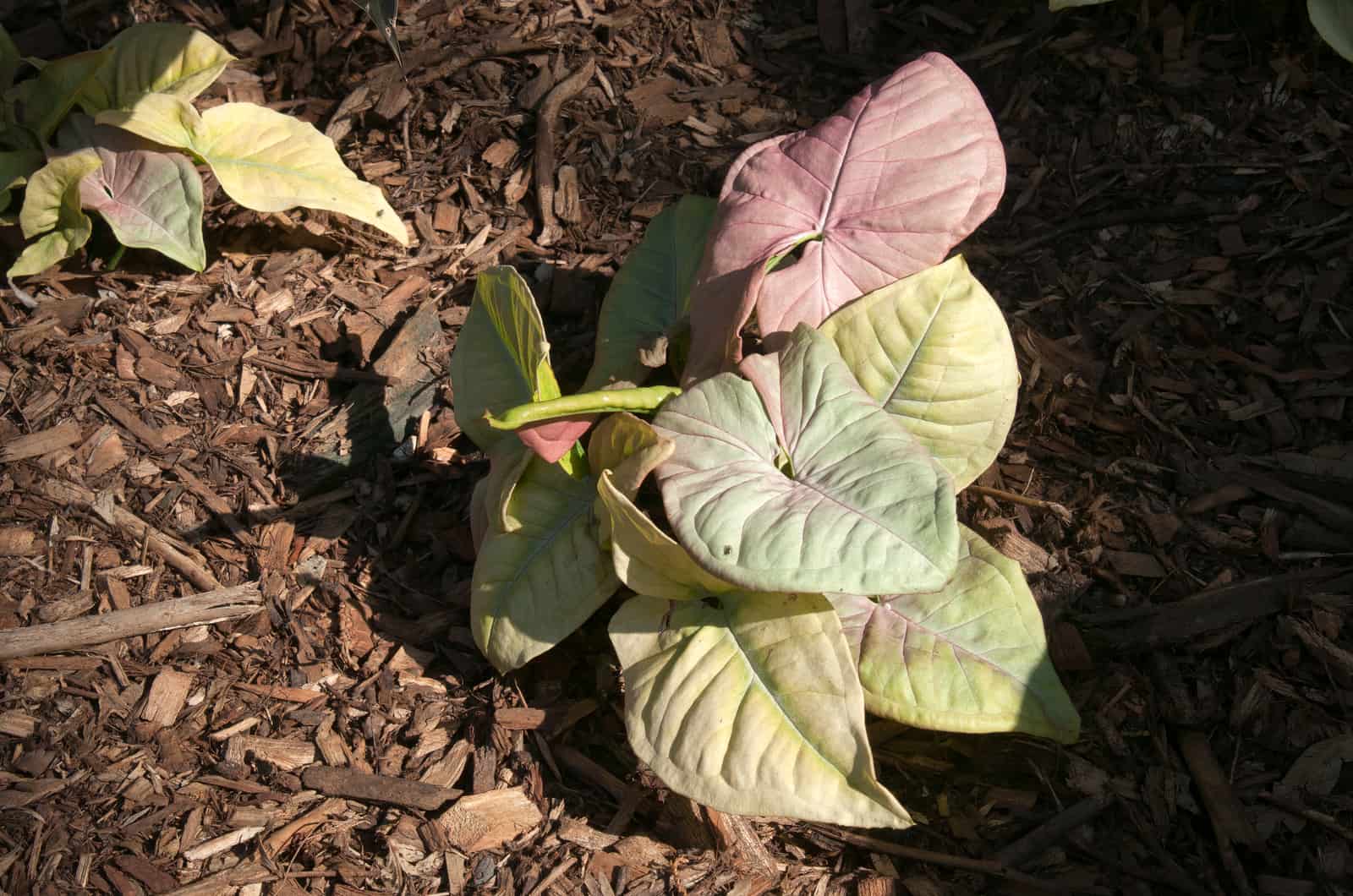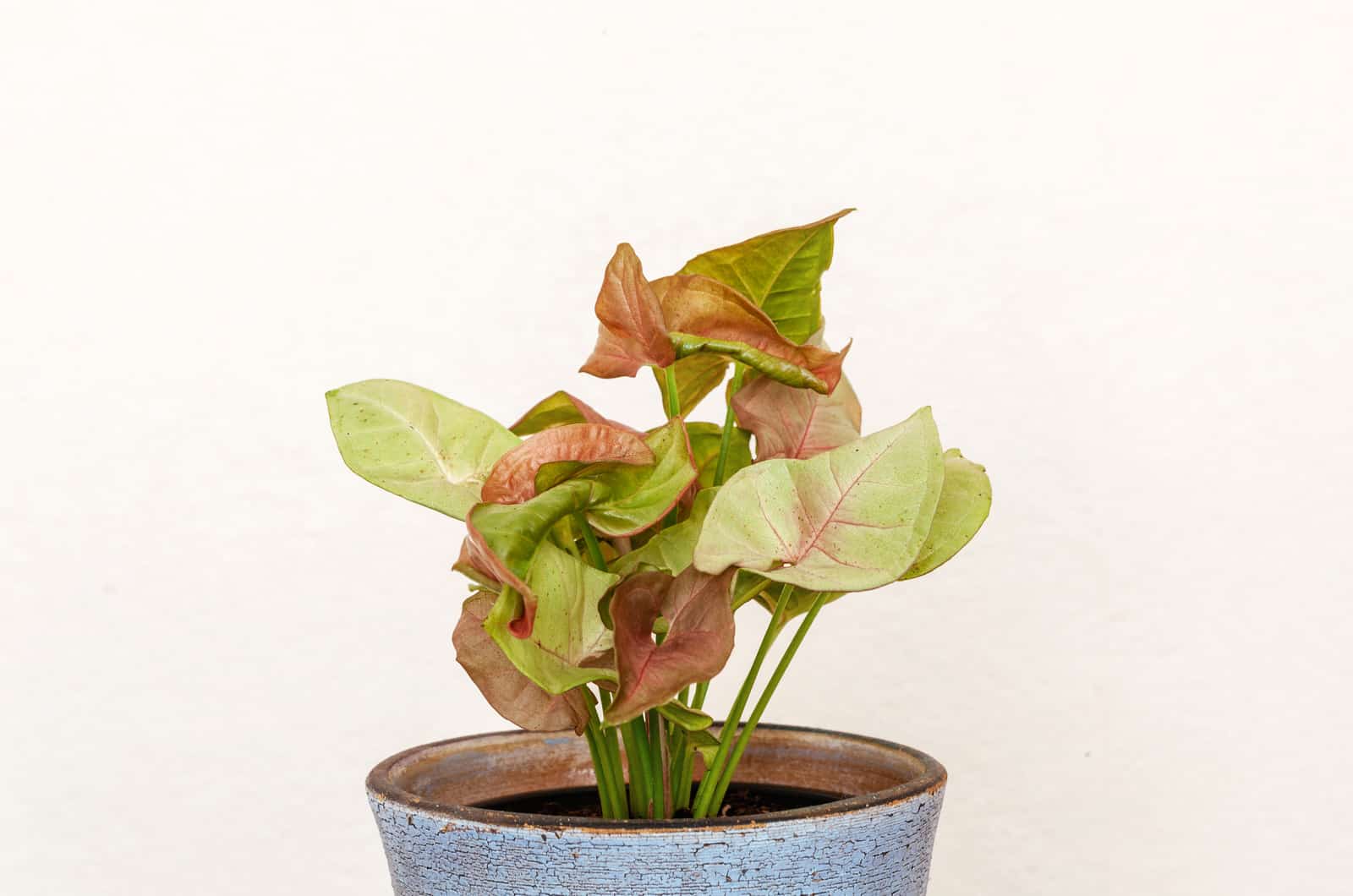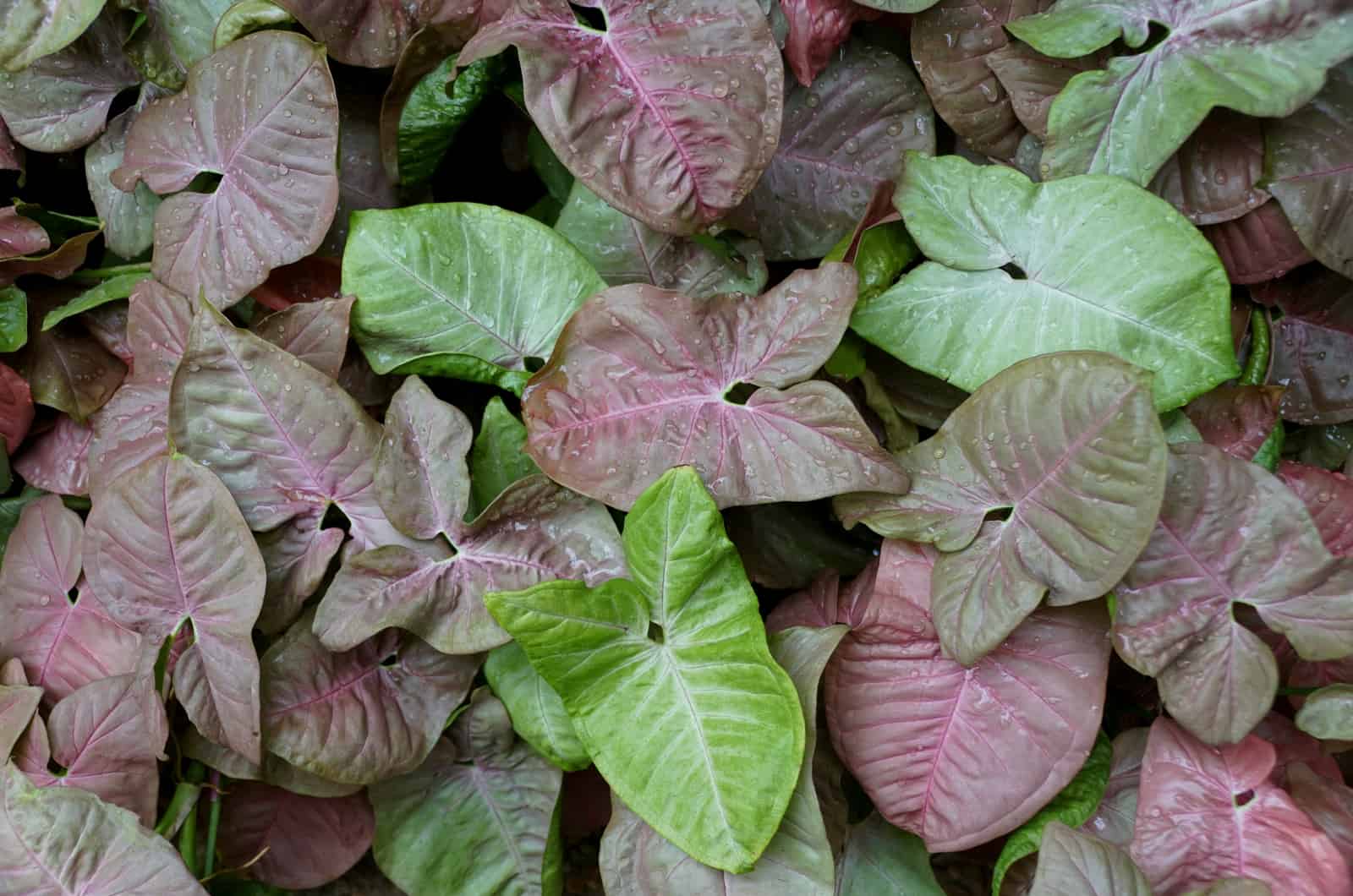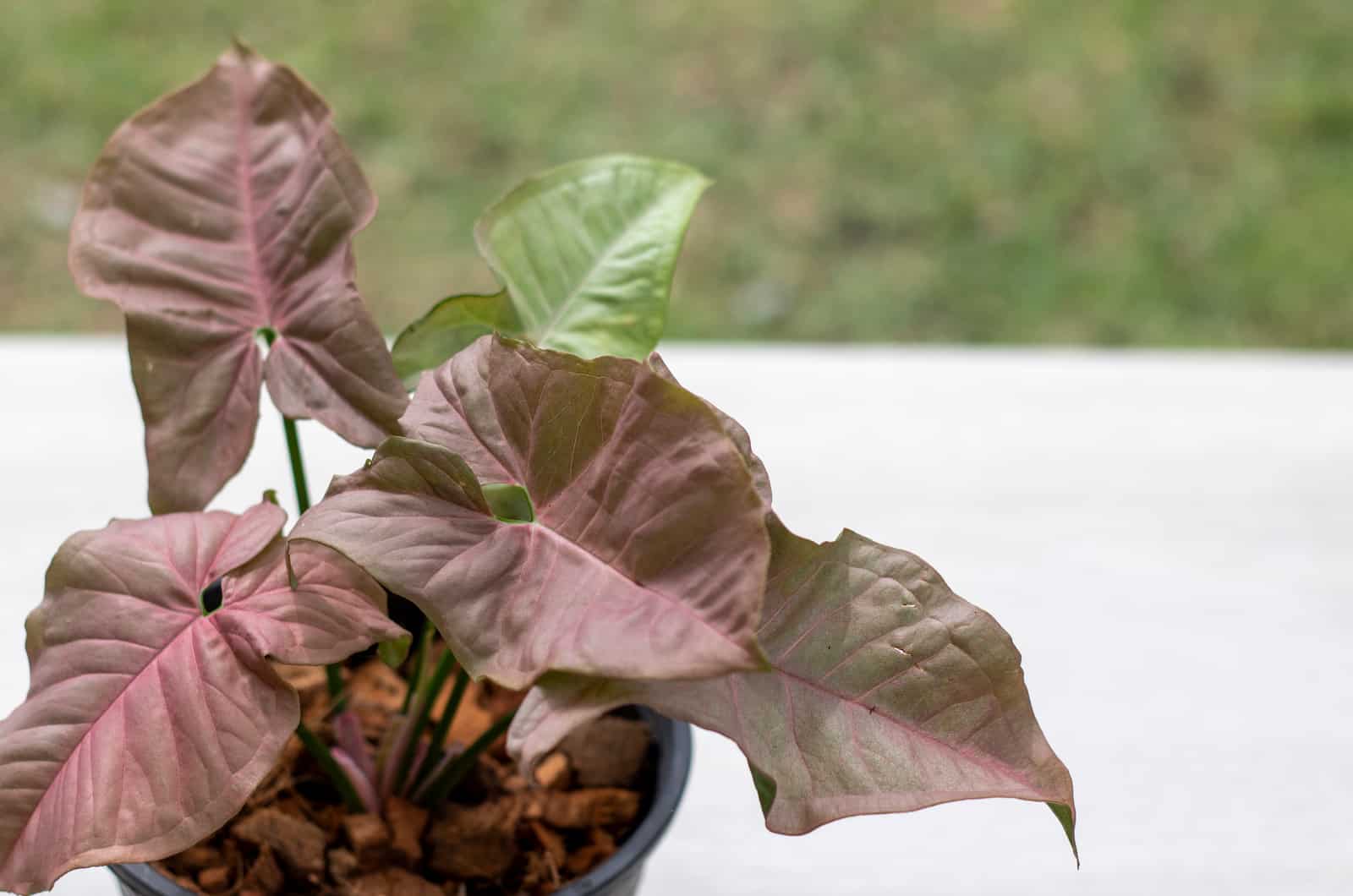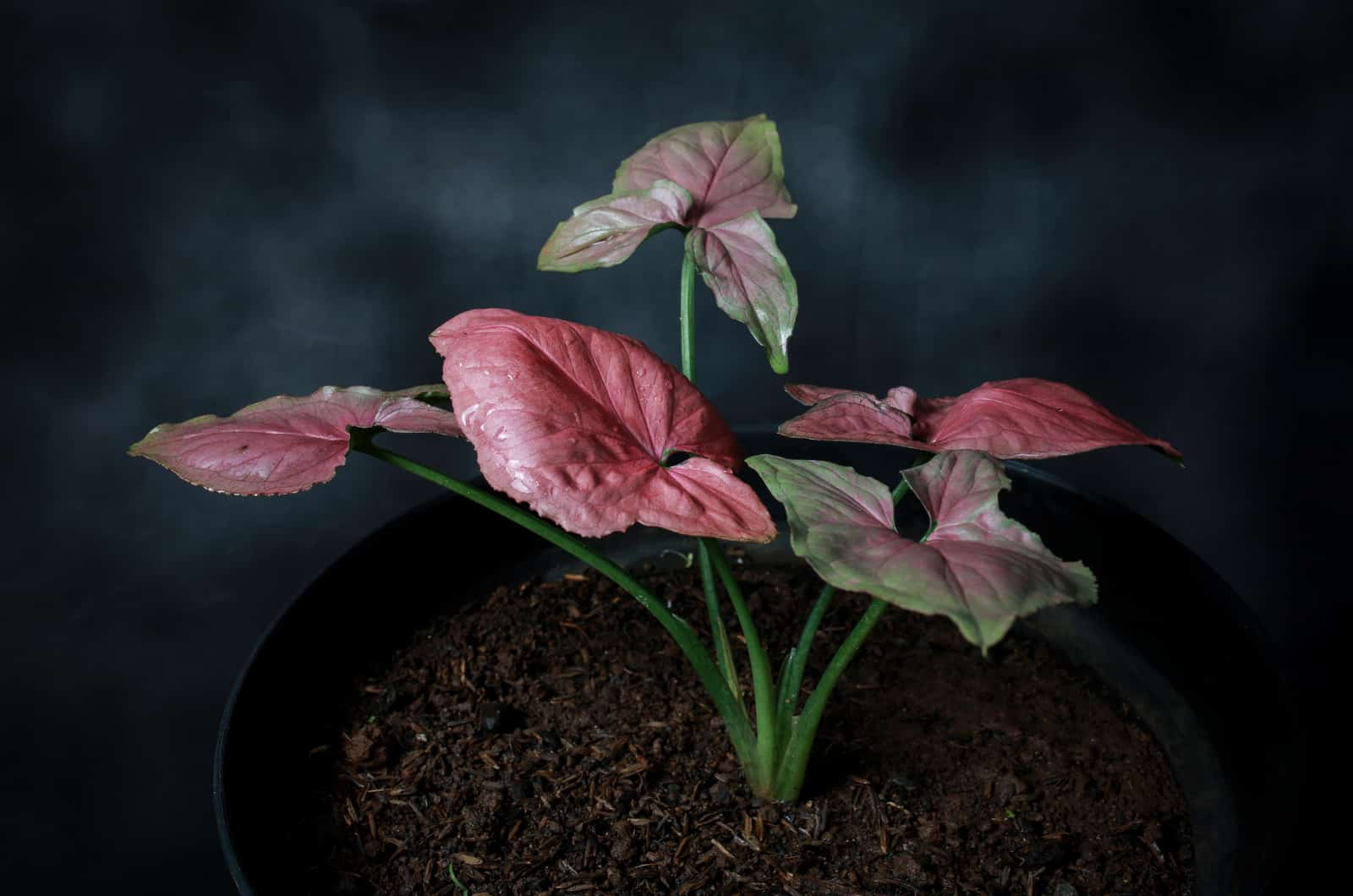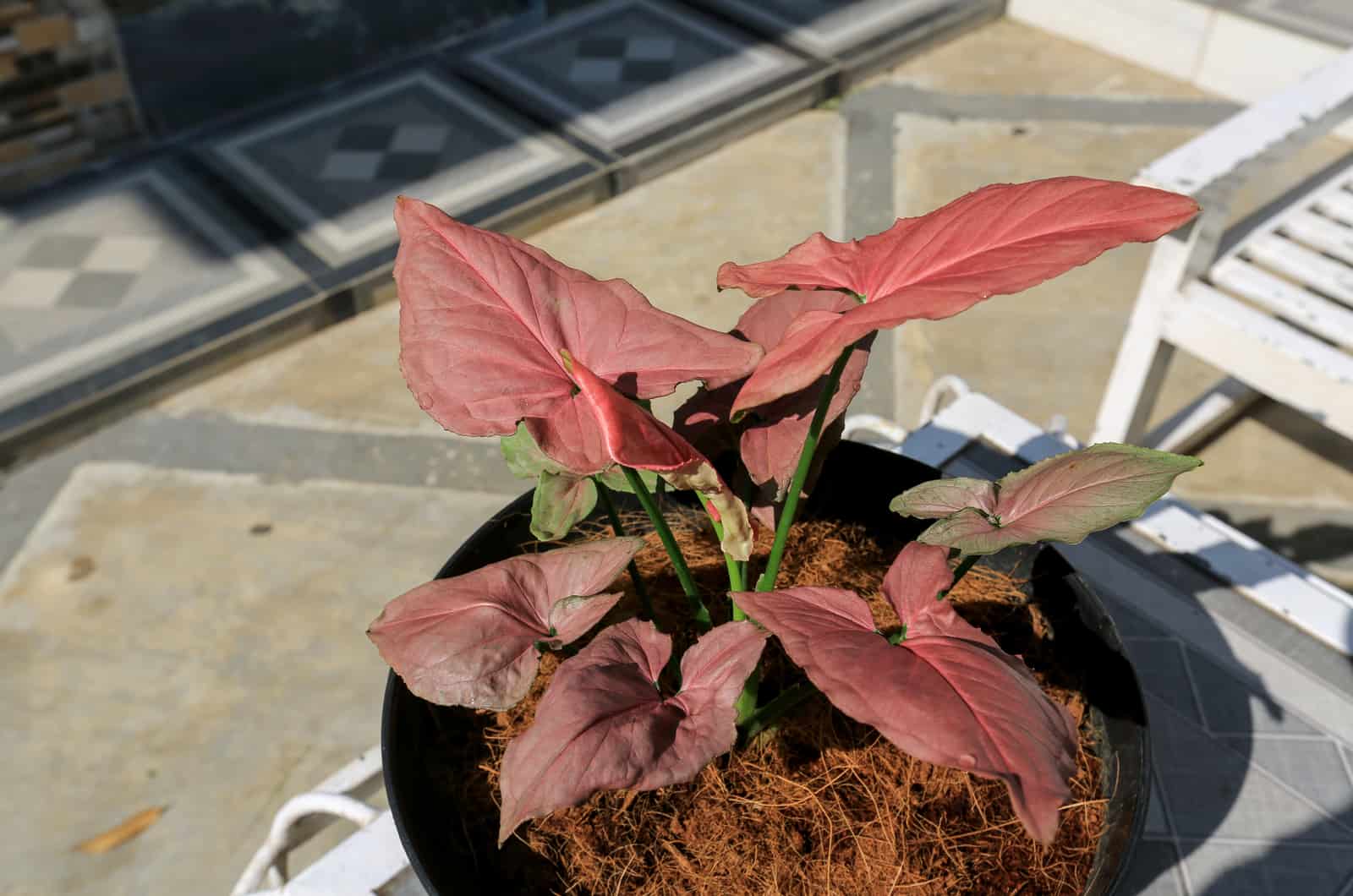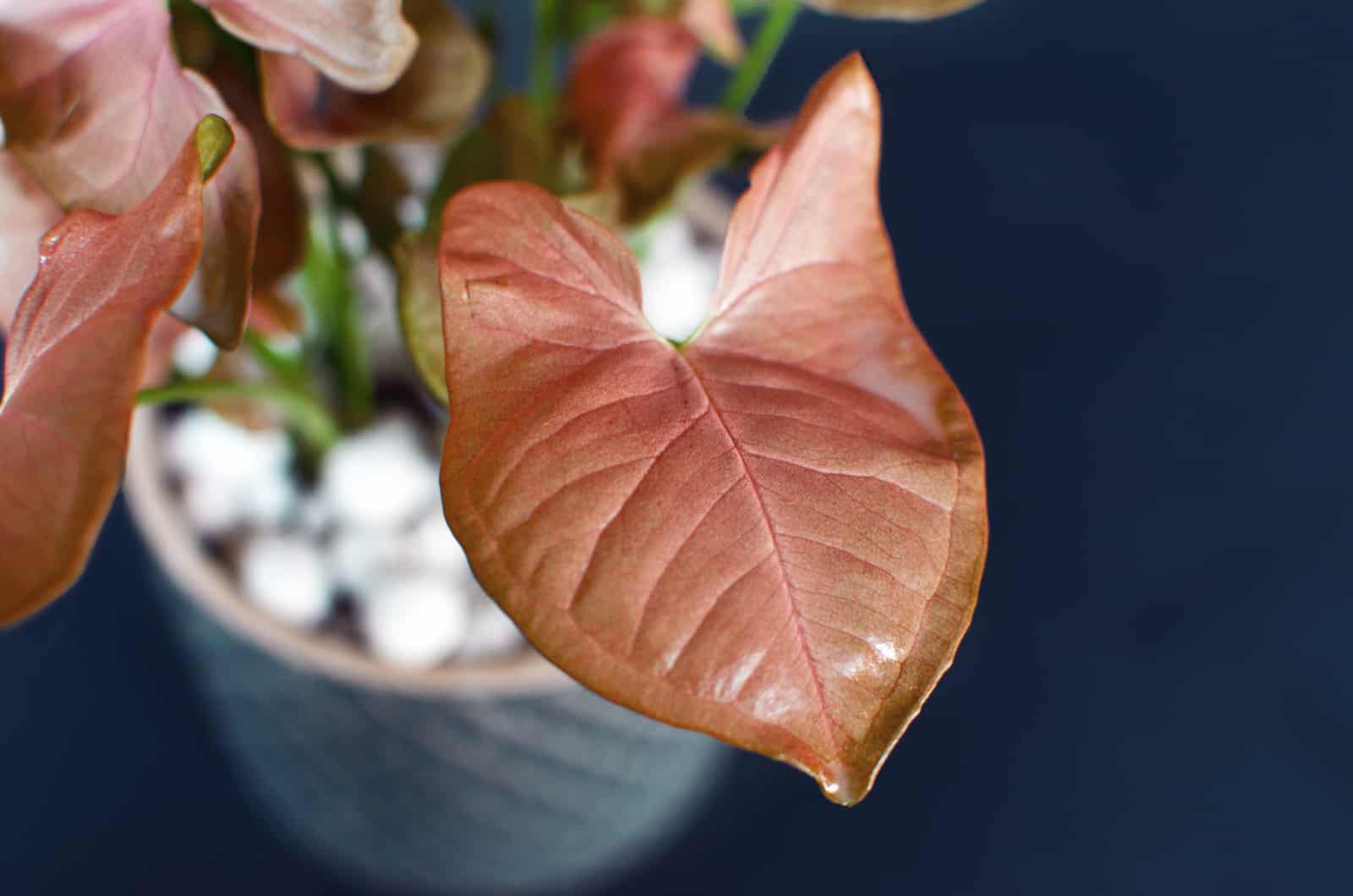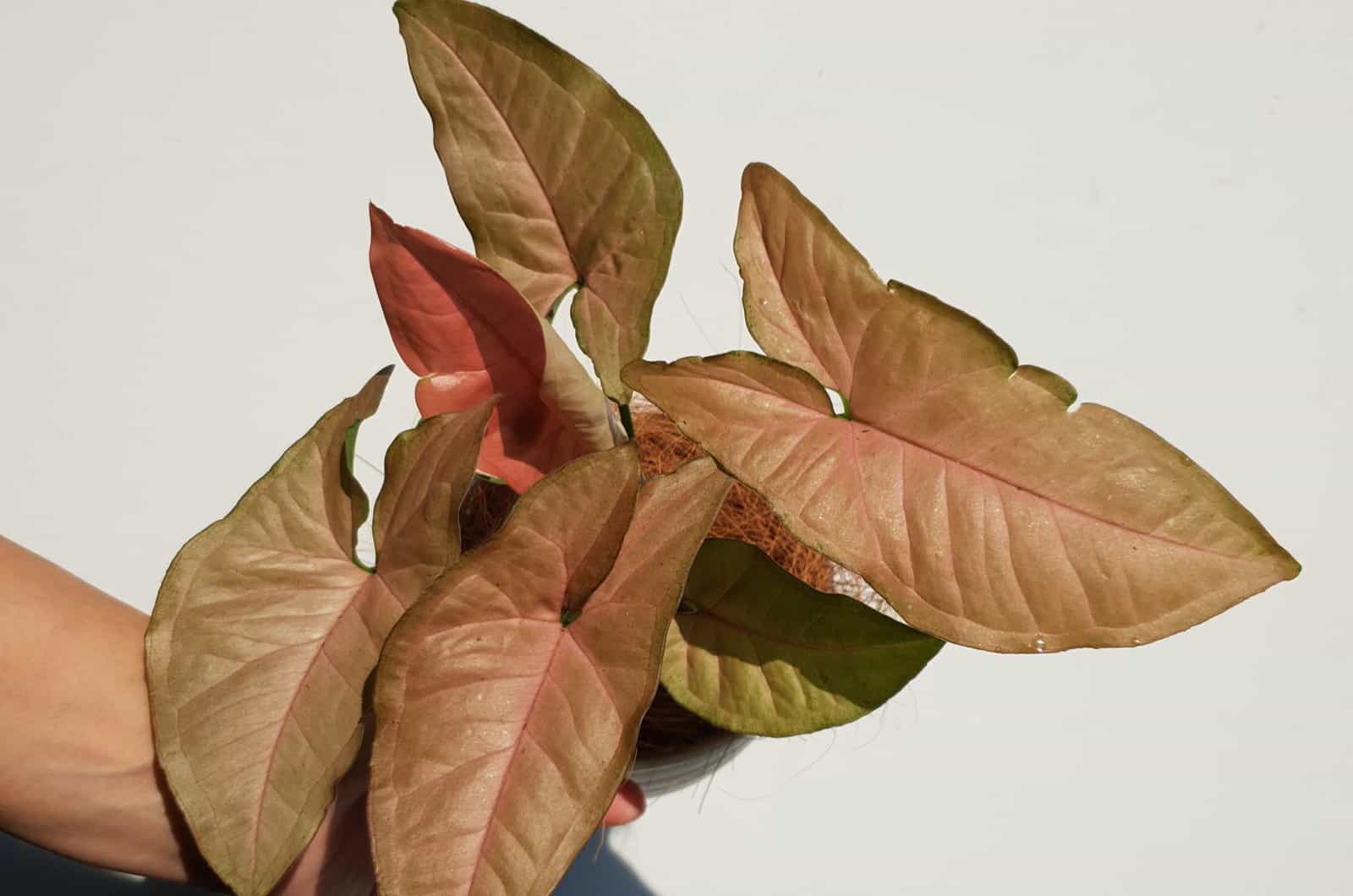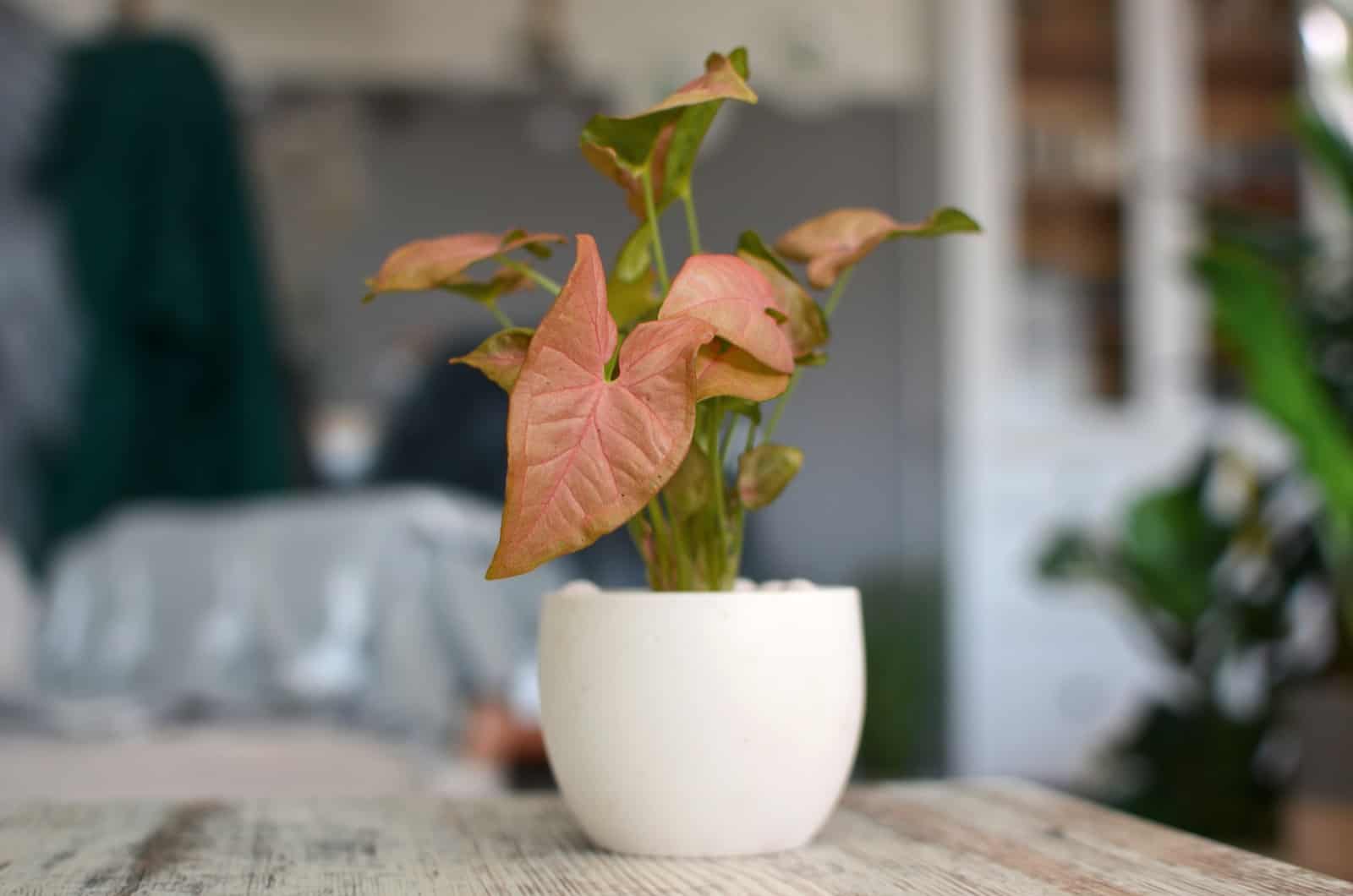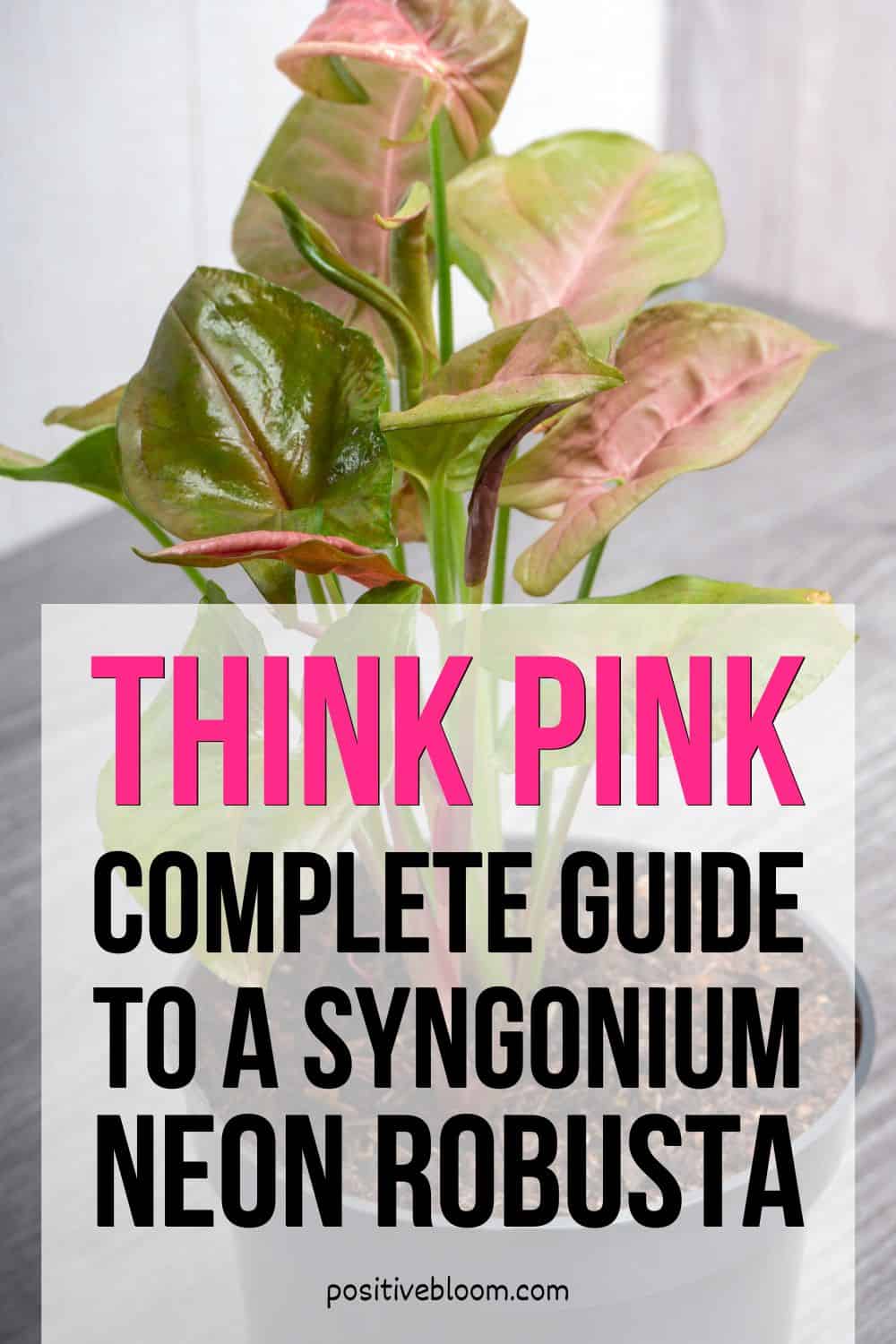The Syngonium Neon is a fantastic houseplant for anyone who wants to add a splash of color to their home decor.
This amazing Syngonium has pink foliage that leaves nobody indifferent to it.
Here you can find the general specifics about this plant:
[table id=127 /]This is just the basic information about the Syngonium Neon, and there is so much more that you need to know before planting one in your indoor garden.
Its plant care is relatively simple, which makes it an ideal gift for a beginner gardener.
This article brings you all the essential facts about this plant. You will learn how to care for it and treat it when it is afflicted with diseases or pests.
Moreover, if you want to know more about this amazing Syngonium, we’ll bring you its background, appearance, benefits, and some other similar cultivars.
You’ll learn how to differentiate it from similar plants and might just become a plant expert!
Enjoy, and let’s get started!
The Syngonium Neon Care Guide
The Syngonium Neon is a low-maintenance Syngonium plant that doesn’t mind if you neglect it.
However, if you want to create a perfect environment for this plant, you need to place it in a bright spot, give it some water, and ensure that the soil is well-draining.
This section brings you all the conditions you will have to meet if you want to have a healthy plant.
When it comes to its light requirements, these are a bit more demanding than their cousin’s, the philodendron, but that shouldn’t stop you from getting that inspiring home look you’ve always wanted.
Light Requirements
This pink Syngonium thrives best in medium to bright indirect light conditions. It can tolerate low-light levels, but the vivid pink color will fade if the plant is kept in full shade, and your plant is likely to become leggy if it doesn’t get enough light.
For the best variegation, keep this plant in indirect sunlight because the direct sun can cause severe sunburn and damage the entire plant.
This plant needs plenty of sunlight, but if the alternative to shade is direct sunlight, it’s better that you keep it in the shade.
However, this plant will thrive in south-, west- or east-facing rooms as long as you keep it a few feet away from the windows.
If you live in a north-facing flat, you can always invest in artificial lights as there are many varieties of heat lamps for plants out there. This is perhaps the safest method of light exposure as you can control how much light your plant is getting.
We usually set grow lights between 200-300 throughout the day as this plant has moderate light requirements.
Water Requirements
The Syngonium Neon is a tropical plant, and it loves when you give it plenty of water. However, you shouldn’t drown it in water because that will lead to root rot.
Our general rule is to fix a watering schedule based on your plant’s needs. We always irrigate the plant at the soil level when the first few inches of the soil feel dry to the touch.
A good piece of advice is to plant the Syngonium in a pot with drainage holes so that your plant doesn’t sit in water all day long.
Water your pink Syngonium until you see water dripping through the potholes.
Finally, the watering frequency depends on the climate, light conditions, and the time of the year.
If you live in drier regions and your plant is exposed to bright light, it might need to be watered every week. We maintain high humidity levels, so we water our Syngonium twice a month during summertime and once a month in winter.
This pink plant enters dormancy in winter, and it cannot use the same amount of water it uses in spring and summer.
Climate, Temperature, And Humidity
The Pink-leafed Syngonium is used to tropical climates, and you should try to mimic these conditions if you want to have a healthy plant.
This climate is manifested through warm temperatures and high humidity. This Syngonium thrives in places with temperatures between 60-80 °F (15-27 °C), but it can withstand colder or hotter temperatures if other requirements such as the lighting, watering, and soil requirements are met.
It can tolerate temperatures down to 50 °F (10 °C), but no lower than that as it is frost-sensitive.
Syngoniums also don’t like being exposed to drafts and temperature changes, or they will wither and droop.
Humidity
This pink Syngonium variety is best grown indoors if you don’t live in tropical climates because you can control the conditions and make sure all its needs are met.
The Syngonium loves humidity, and anything between 60-90% is perfect. The average home humidity is around 30-40%, so you need to increase this if you want to have a happy plant.
There are 5 ways of meeting a Syngonium Neon’s humidity requirements:
1. Grow It In A Terrarium
Our favorite way of maintaining the ideal humidity level for Syngonium is growing it in a terrarium. Not only does it look amazing, but it also saves you a lot of trouble.
Simply water the plant before putting it in a glass container, and that’s it. The water will evaporate into the air around the plant, and you won’t have to water it for a few months as the soil won’t dry so quickly.
2. Use Pebble Trays
The pebble tray method is another excellent way of raising the humidity around your plant.
Find a deep tray and fill it with pebbles and water, put the potted plant on the pebbles, which will prevent the water from getting to the roots, and place it where the plant can get plenty of light.
The water will evaporate and raise the humidity around your plant.
3. Use Humidifiers
If a pebble tray doesn’t fit in with your home design, you can always find a small humidifier that does. You just have to turn it on and leave your plant to enjoy the moisture.
4. Put Your Plant In The Bathroom
Bathrooms are the most humid places in our homes and are perfect for moisture-loving plants such as the Syngonium.
You might feel unwilling to hide such a stunning plant in the bathroom, but why not accessorize this room as well?
5. Spray It With Water
The last method we use is spraying the plant’s foliage with water from time to time. However, we don’t use this method very often as it can easily backfire.
You need to be very careful when misting because too much water on the foliage can lead to fungal infections.
However, you can avoid these diseases by letting the leaves dry between misting.
Soil And Fertilizer
This indoor plant loves a moderately acidic substrate with a pH level between 5.5 and 6.5. But that’s not all!
Syngonium plants need a fertile substrate rich in nutrients and organic material.
However, you should also ensure that the soil is well-draining and if you’re at the checkout with your Syngonium and a bag of potting soil, grab some perlite, vermiculite, and peat moss so you can create your own Syngonium potting mix.
Fertilizer
You should fertilize this plant during its growing season, once a month with a liquid fertilizer.
They are not heavy feeders, but they benefit from occasional feeding. You can also fertilize them every time you water them, but be sure to dilute the fertilizer in plenty of water so that it doesn’t kill your plants.
You don’t have to feed the plants during dormancy, but you can lightly fertilize them once every two or three months.
And remember, always water the plants before feeding them as this reduces the risk of over-fertilization.
It’s Time For Repotting
Syngoniums aren’t speedy growers, but they need to be repotted from time to time, so they don’t become rootbound.
However, you won’t have to repot them more than once in two years, or you can do so only when you find an adorable hanging basket.
The best time to repot this plant is when it’s actively growing, so spring or summer. It doesn’t like when you disturb its sleep, and it needs to adjust to its new home before winter.
Choose a pot 1-2 sizes bigger, fill it with fresh potting mix, and plant the Syngonium. Water the plant thoroughly and don’t expose it to unfavorable conditions.
You don’t want to shock it more than it already is!
How To Propagate A Syngonium Neon
The easiest method of propagating this plant is from stem cuttings. This method almost always works, and if you’re a beginner, we’d recommend propagating it in water.
However, in this section, you can learn how to propagate this plant in both water and soil.
Propagation In Water
Propagating a Syngonium in water takes less time than propagating it in soil, and it has never failed us.
First, you need to pick a healthy stem with healthy leaves and preferably aerial roots.
Next, remove the bottom leaves and place the cutting in a jar filled with water. Make sure that there is no foliage underwater as this will only contaminate the water.
Change the water every other day, and place the jar in a bright spot.
Finally, you should notice the growth of new roots in 3-4 weeks, and that’s your cue to repot the plant.
Place it in a pot filled with a fresh and moist potting mix, and don’t expose it to undesirable conditions.
Propagation In Soil
Propagating in the soil is a bit risky because there is a chance that your plant won’t make it. For that reason, you should always choose a stem with aerial roots.
Cut the stem just below the leaf node and dip it in a rooting hormone before planting it in a well-draining and well-aerated medium.
Keep the water, light, and humidity conditions perfect to maximize the chance of success.
The downside of this method is that you won’t see the roots developing, but once you notice that your plant has started growing, you should move it to a bigger pot.
Here’s a video that can help you with overall Syngonium care as well as propagation.
Cleaning And Pruning
We have owned plenty of monsteras and alocasias, so we know how important cleaning and pruning are.
The Syngonium Neon also needs to be cleaned on a regular basis because it is a dust collector.
Use a wet cloth to wipe the dust and then dry the foliage afterward. This might be too much unnecessary work, so you can leave the leaves to dry on their own, which could also be your method of increasing the humidity level.
Just make sure the foliage is always dry before cleaning, as wet leaves are a perfect breeding ground for fungi.
Pruning
Pruning is another essential part of the Syngonium care guide. Whenever you notice sunburnt, diseased, or otherwise discolored leaves, you should cut them before the infections can spread and to stop the plant from wasting its energy.
You can also prune this plant for a bushier effect but never cut more than one-third of the entire plant.
Common Issues
One thing that we all must accept is that our plants cannot always be healthy and pest-free.
However, there are some things we can do to avoid dealing with these issues, and the rest is out of our hands.
In the following section, you can read about the most common problems that Syngonium plants have, and how to prevent and cure them.
Pests
Pests usually attack unhealthy, overwatered plants with wet leaves, so the best thing to prevent bugs on your Syngonium is to meet its requirements.
However, pests do sometimes attack our plants for no reason, and it’s helpful to know how to get rid of them.
The most common insects that attack this plant are aphids, mealybugs, scales, and spider mites, and as soon as you notice one bug, you need to move the plant elsewhere so that your other plants aren’t in any danger of getting infested.
Next, spray the plant with neem oil or your preferred insecticide and wait until all the bugs are gone.
If you prefer natural solutions, you can use strong water pressure to remove them, or you can do it yourself with rubbing alcohol and a Q-tip.
However, be sure not to touch the stem or leaves of the plant, as alcohol can be quite irritating for it.
Diseases
These plants are rather gentle, and if they’re exposed to inadequate conditions, they will let you know.
They can get infected with root rot and leaf spot quickly if you water them and leave their leaves wet for too long.
You can recognize root rot by stunted growth, drooping, and wilting yellow foliage. The sooner you attend to this problem, the greater the chance that your plant will survive.
Remove the soft and dark roots and replant the Syngonium in a new pot with a well-draining medium.
Leaf spot is another disease caused by improper moisture requirements. You need to avoid overhead watering and misting your plant too often to prevent this disease.
However, if you notice yellow, brown, or black spots on the leaves, you should immediately isolate the infected plant from the rest.
Cut off the diseased foliage and spray the plant with a fungicide.
You need to act quickly when you notice the symptoms of these diseases because that way you’ll have a better chance of saving your plant.
Discolored Foliage
Yellow foliage is not only unpleasant to the eye but is often an indicator of a more serious underlying issue.
Yellow leaves may signify that your plant is either underwatered or overwatered. If you’re not sure, check the soil, and if it’s dry, you should water the plant. If it’s soggy, wait a few days before watering your plant.
Yellow leaves may also indicate that your plant is not getting enough nitrogen, so you either have to change the fertilizer you’re using or start using fertilizers, as these plants need additional sources of food.
On the other hand, sometimes your plant’s foliage can turn brown. If this happens, the likely culprit is dry air. But, you can easily resolve this; just mist your plant, or raise the humidity level some other way.
Finally, brown foliage may also result from too much direct sunlight, which causes sunburns. These plants need bright light, but the direct sun can burn them, which is why you should keep the plants where direct sunlight can’t get to them.
More Facts About The Syngonium Neon
Now you know the most important things about taking care of this plant, there are some other things that you should know too.
Information on this plant’s background, appearance, and benefits may prove crucial if you’re not sure which plant is perfect for your home.
We bring you all this information and some similar cultivars so that you know how to make a distinction between a Syngonium Neon Robusta and other species.
History And Background
The name Syngonium comes from the Greek words syn (with, together) and gone (gonad), referring to the joined female flowers’ ovaries.
The more common names for the Syngonium Neon Robusta are the Pink Arrowhead plant and the Pink Arrowhead vine.
The Syngonium podophyllum is still referred to as Nephtytis, even though it is a different genus. They look the same, but in 1879, the Syngonium got its own genus.
It is a member of the Araceae family and a cousin to anthuriums, philodendrons, and aglaonemas.
Appearance
The Syngonium Neon is a climber plant, perfect for your hanging baskets. However, you can always put it in a large pot and stake it if you want to give your garden a tropical vibe.
Its neon pink leaves with occasional light green variegation are differently shaped, depending on their age. The youngest leaves are heart-shaped, and as they grow older, they adopt an arrowhead look.
However, mature plants lose that look once again as their foliage gets broader and larger.
This plant doesn’t usually bloom indoors, but you don’t have to be disappointed about that. We grow these plants for their foliage, and their flowers can be described as inconspicuous at best.
There is nothing exciting about a green spathe enveloping a green-white spadix, but the blush pink color of the leaves won’t leave anyone indifferent.
Benefits
This plant has many benefits, but the main one is that it purifies the air. It removes toxins such as xylene, benzene, toluene, and formaldehyde, which are found in almost every household.
It is excellent for absorbing carbon dioxide, and it improves the design of every home.
The Syngonium Neon is also a natural humidifier as it has a fast transpiration rate. Place several of these plants in your living room, and dry air will become a problem of the past.
Similar Cultivars
The Pink Allusion and Red Heart are cultivars of the Syngonium podophyllum, just like Neon Robusta.
In this section, you can read about the main differences between these varieties and decide which one you like best.
The Syngonium Pink Allusion
The Syngonium Pink Allusion is very similar to the Neon Robusta, but you can distinguish them by the color of their leaves.
The Pink Allusion has somewhat darker pink leaves that are a bit spikier.
The Syngonium Red Heart
The Red Heart Syngonium is easier to recognize as its foliage is more heart-shaped than arrowhead-like.
The color of the leaves is a dusky pink, and your Neon Robusta would love it.
Q & A
We have talked about many things regarding the Syngonium Neon, but that’s not everything.
In our Q & A corner below, we answer some of your most frequently asked questions.
Let’s begin!
Is the Syngonium Neon Robusta rare?
The Syngonium Neon Robusta is not a rare plant anymore. It is a common sight in houses around the world, and the online prices start from $12.
How can I tell if my Syngonium Neon is dying?
Change of color, drooping and wilting leaves, and the stunted growth of your Syngonium are sure signs that your plant is not healthy and might be dying.
You need to look for the underlying causes of these issues, and most commonly, those are fungal infections.
Address these issues as soon as you see these symptoms, and you can save your plant.
Is a Syngonium Neon safe to eat?
No, Syngonium Neon isn’t safe to eat as all of its parts contain calcium oxalate.
If people or their pets ingest any part of this plant, they may suffer pain and a burning sensation on their lips, tongue, and mouth. The mouth will swell, and difficulties breathing might appear.
Animals usually start drooling and vomiting after eating the foliage of this plant.
Closing Thoughts
The Syngonium Neon is an amazing houseplant. It has a mesmerizing ability to capture your gaze, and only willingly can you let go.
This plant is also quite easy to care for: you only need to make sure it gets bright, indirect sunlight and that you don’t overwater it.
However, we made a whole section about the most common problems it experiences so that you know what to do in case something terrible happens to your plant.
Finally, it must be mentioned that this pink arrowhead plant loves company and its relatives are a perfect choice.
Good luck and until next time!
Like this post? Share or pin it for later!

